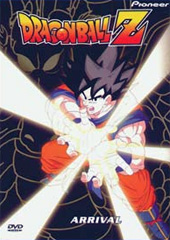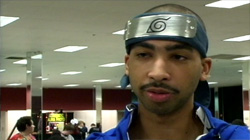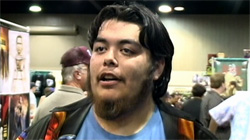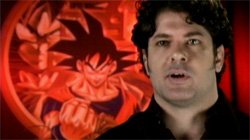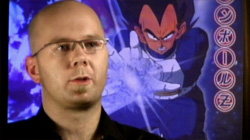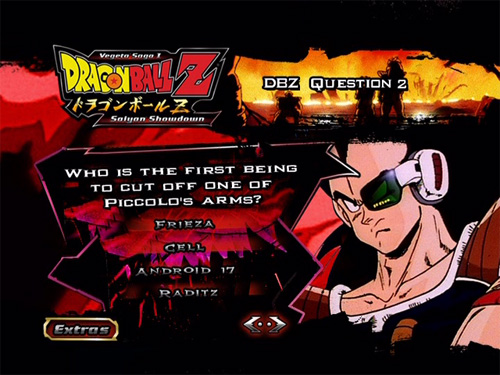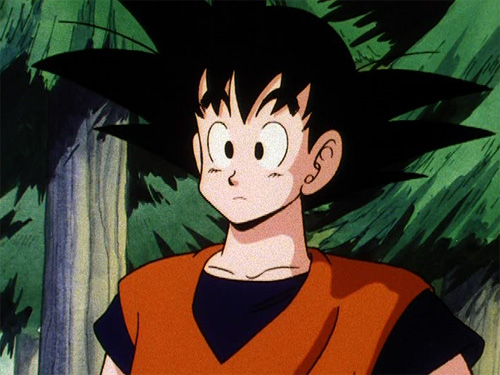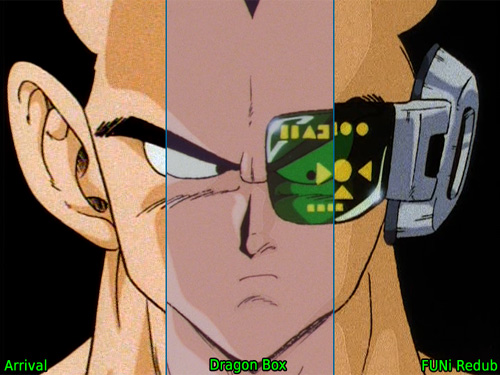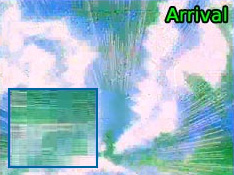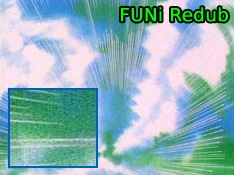The so-called “Ultimate Uncut Edition” releases are finally upon us. Before we starting talking about them, we should probably explain to some people what they are. Let us start at the very beginning.
After lackluster performance with the original Dragon Ball TV series, FUNimation moved on to Dragon Ball Z in 1996. Still known for nothing more than Cyboars at the time, FUNimation was in no position to handle their own home distribution, and so sub-contracted these rights out to Geneon, then still named Pioneer Home Entertainment. Pioneer would release FUNimation’s English dub of Dragon Ball Z on home video and DVD in exchange for sole distribution rights to these episodes.
Needless to say, FUNimation eventually split ways with Saban (their original syndication television distributor) and even Pioneer (their original home format distributor), and wound up with piles of cash and a huge property on their hands. They would move on to in-house distribution, and even fully uncut, bilingual DVDs featuring the original Japanese audio track and a translation by well-known and well-versed fan Steven J. “Daimao” Simmons.
What about the first two seasons, though? Approximately 67 episodes were hacked down to 53 episodes, had been released as edited-only, and featured an English dub by the original Ocean Studios cast (FUNimation had since moved on to exclusively using their own, local voice talent for the show).
On 31 August 2003, this sub-license to Pioneer expired. Long before that, though, FUNimation had already announced plans to go back and re-dub the episodes, and release fully bilingual DVDs to match the rest of the series.
Here we are, a year and a half later, and we are finally seeing these darn episodes fully uncut on DVD in our country for the first time! Huzzah!
Or is it really something to celebrate about…?
It really depends upon what kind of fan you are. If you are a (dare I use the phrase?) “old-school” fan, you are quite happy to throw in the DVD and finally see some “Daimao” translations on an uncut Japanese audio track. If you are a newer dub fan, you are probably enjoying hearing Schemmel, Sabat, and the rest of the current gang voicing the characters instead of the original Ocean Studios cast. Or maybe you are someone like me who fell in love solely with the original Japanese version, yet still holds an incredible place in their heart for the original Ocean Group dub — you heard that first, and those will forever be “the” English voices you attribute with the show.
So where do we truly begin?
The Packaging
This review is based around the disc-only release, and we unfortunately know nothing about the box that accompanies the “Starter Set”.
It seems almost irrelevant so many years later, but we are finally getting some really neat looking packaging with these DVDs. Extremely heavy on the reds and blacks, FUNimation also hypes up the “uncut”-ness of the episodes by finally featuring a bit of Japanese on the cover. Granted, it is only Dragon Ball Z in katakana… but after those trailers and the incoherent Japanese gibberish, at least they got the darn name of the series correct!
Interestingly enough, totally going against fan speculation, the episodes are clearly labeled as 1, 2, and 3. As this will completely throw off FUNimation’s own episode numbering, it is quite confusing — not that we are complaining, since it is correct, and all…
In general, the packaging is very slick, if only slightly too dark for my tastes. I dig it. It does not scan very well, thanks to the reflective colors/paper/etc. used, but that only makes it look nicer in person. The insert is a fold-out showcasing FUNimation’s releases up through May.
The Extras
Probably the best part of (at least) the first disc released, there are a slew of extras to check out! There is some “interesting” footage of what you perceive to be the typical “otaku” talking about the show, why they love it… which all gets a tad bit awkward, but when everyone is having such a great time with the franchise, can you really hold anything against them?
Positioned among these random fans are some comments from an Anime Insider writer, Milton Griepp of IcV2, but also with Sean Schemmel (Goku) and Chris Sabat (Vegeta). They certainly have their own insight into the characters, their personas, their motivations, etc. You may or may not agree with what they say, but if nothing else, it is fantastic to see two actors so in love with the characters they portray diving a bit into their motivations.
The “Nimbus Cloud” feature pops up an alternate subtitle track that gives you an indication (via Kinto’un popping up in the upper-right of the screen) when and what specific footage was cut from the original 1996 dub. Massive admiration for the poor fool who had to sit there and count frames to time that darn cloud! Very neat. The only think that irked me about this feature is that since it is done via a subtitle track, you cannot watch with this with other subtitles at the same time.
Shocking more than anything else is probably the presence of the Spanish audio track! Only previously dangled in front of us on their Dragon Ball Z Movie 5 release, FUNimation has included the complete Spanish dub for the episodes, along with the two English tracks (the new dub in both 2.0 stereo and 5.1 surround) and the original Japanese track (presented in its original mono).
There is also a trivia game you can play, but as expected, all of the answers are presented in their FUNimation “reversioning” incarnations.
All in all, this first disc is pretty jam-packed with additional content.
The Script
Needless to say, if you’re a fan of the original Japanese version, you have nothing to worry about. Steve is in full-force, and we still love him!
If you are watching the Spanish dub, you will be presented with translations from the Japanese audio track; there are no subtitles exclusive to the Spanish dub. As this dub is largely faithful, this is not much of a problem.
Then there is the new redub. Truthfully, I only spot-checked it — I am not particularly interested in an English dub of the show. What to expect, though? More of the same. In fact, it is almost exactly the same damn script from the original dub back in 1996. Some of the things are slightly different (such as, thankfully, Gohan saying he is “five and a half!” now being “four and a half!”… which brings in tons of inconsistencies with how old FUNimation says he is throughout the course of the series, but that is a whole different matter). Overall, though, it is essentially the same script. Lines from the first broadcast such as Kame-Sen’nin’s “I smell death in the air!” return, yet a similar line (Piccolo’s, “You could get killed, for one thing…”) remain missing. Something that struck me as FUNimation saying “Remember our video games, and buy more!” was Raditz’s “I call this one keep your eye on the birdie!” being changed to “I call this one Double Sunday!” — neither is even remotely close to the original script.
(For those unaware, “Double Sunday” is the name of an attack given to Raditz exclusively in the Budokai series of video games. It has no name or mention in the original Japanese script for this episode.)
Long story short, if you are a fan of either the original Japanese or Spanish dub, you are in for some great viewing. If you are a hardcore fan of FUNimation’s dub work, I really cannot say what you will get. If you are a fan of accuracy in your dubs, it is a step up, but there is still something “off” about the whole experience, it seems. If you a fan of exactly what FUNimation brought you in the past starting with “Season Three”, you will probably dig what you get — the musical score is different however (yet another replacement score from a new composer), so that is something to keep in mind.
The Audio
I really cannot say much with regards to the English audio track; I am not a fan of it. There is a stereo mix and a 5.1 mix that I am sure sounds fantastic.
The first thing I noticed while watching the disc in Japanese was how fantastic it sounded compared to prior FUNimation releases. Perhaps it is just a new way of encoding the discs, or maybe better source material… whatever it is, I appreciate it.
The Spanish track sounds even better. It, too, is not a stereo mix of the show, but it is a step above the Japanese track and sounds quite amazing. Definitely check it out.
And then comes the big topic of discussion…
The Video
We were promised digitally remastered video footage. What did we get?
A really awful-looking first episode, and some pretty decent-looking episodes 2 and 3.
We are not entirely sure what happened with the first episode of the series. It looks embarrassing. It is not particularly full of macroblocking, and it is not traditional grain — it just looks like complete garbage. The original release of Arrival looked very similar, so we can only assume that FUNimation’s master for this episode simply cannot be cleaned that well.
We cannot completely forget about it, though, because we know that the episode does not look like that. There must be a better looking version somewhere. Whether or not FUNimation has access to this version is a completely separate matter, and it is totally understood if what they purchased a decade ago is still all that they are privy to.
For the sake of comparison, let us do a three-way between Arrival (1999 FUNimation/Pioneer DVD release), Saiyan Showdown (2005 FUNimation DVD release), and the Japanese “Dragon Box” (2003 Toei DVD release).
As you can see, both FUNimation releases are ever-so-slightly zoomed in. The colors are significantly saturated, and in the case of this episode, far too dark. The amount of grain is quite unbelievable, and while it is still somewhat present in the Japanese release, it is nowhere near what the domestic releases contain.
Granted, the first episode is an extremely poor comparison to make and unfair to all sides; FUNimation’s master is clearly terrible, while Toei went to great lengths to clean up their footage from the original masters they actually and personally own.
So let us take a look at a few other examples.
This particular shot is from the third episode. Once again, FUNimation’s colors are saturated, but not to the point where it is ridiculous. What is obnoxious is the pure darkness of FUNimation’s release; it is less obvious on a television screen (properly calibrating helps, too)… but it is still there. The grain is slightly more significant on the FUNimation release, but certainly leagues better than what was previously released on Arrival.

Without going into too much technical detail, when DVDs are encoded properly, you will not see all that digital breakup. As Dragon Ball Z is a high-energy show with lots of motion, it can be difficult to compress (as are most action shows). If there is not enough bitrate allowance given to the high motion, you are going to see what looks like “blocks” (called “macroblocking”) appear — it is the MPEG-2 format unable to keep up with the footage. The first-generation domestic anime DVDs (such as the original FUNimation/Pioneer release) were notorious for having embarrassingly low bitrates, and it showed in releases such as Dragon Ball Z.
So how do the three discs stack up against each other? Well, a picture is worth a thousand words. Since we have three pictures below, that is a whole lot of words. Three thousand of them, actually.
The small box in the lower-left you see is actually a full-size capture of that part of the screen. The scene this comes from is when Raditz first rushes forward to elbow both Goku and Piccolo in the backs from behind them. It is a very high-motion scene, and this particular frame is as Raditz is in the process of rushing forward, and momentarily disappears from the screen all together.
Needless to say, Arrival had a lot of problems with this scene. Look at those blocks; you could actually count them if you wanted to! The new FUNimation release keeps up pretty well; the grain is still there, and the saturation is somewhat obvious, but overall it is a decent effort. The winner (of course) is the “Dragon Box” release, with its original colors and tolerable amount of grain and breakup considering the age of the show (release in 1989) and production methods (16mm film).
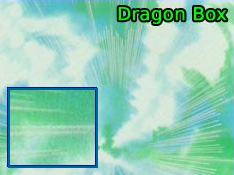
It is no doubt a step up from the original Arrival release, and while it is not really near the “Dragon Box” release, it is quite an acceptable above-average FUNimation product. I have some minor issues with the slight zooming and dark colors, and I never have a problem with killing the extras for a higher bitrate on the actual episode content, but really… it is a decent looking release. Not perfect, but pretty decent.
Final Thoughts
Before I say what I ultimately think of the release, let us talk for a bit about what FUNimation thinks of the release. It may be obvious, but they really think it is great, and they want you to buy it. But why? Because they have to. They are releasing a set of episodes that, in all reality, have been available for a decade now. No matter what you think of the original dub and its censoring, the story remains intact enough for you to have watched the rest of the series with no problem. They are essentially up to the challenge of convincing their fans they need to purchase the same episodes for a second time.
So they put a little love into it.
There is something for every type of fan, because they know there are bunch of us they need to convince. If you are a fan of the dub, you have your stereo and 5.1 mixes to enjoy. If you are a curious fan, you have your extras to enjoy. If you are a fan of the original, you have your original Japanese version with Steve’s translations to enjoy. No matter what type of fan you are, you have the bonus additions of nice audio on all versions, including an unexpected inclusion of the Spanish dub (which shows you what a great dub is supposed to be!).
It is clear that FUNimation had a ball with these episodes, even if the effort unfortunately did not go into the script for the new dub.
I am moderately impressed — not a gigantic amount, but enough to thoroughly enjoy the release. I am floored by the inclusion of the Spanish track, and I am going to have a ball watching it for the remainder of this “Ultimate Uncut” release. The extras really are not up my alley, but if you are into that kind of thing, that is great. Of course, it will be interesting to see how they handle including extras for another sixty-odd episodes; they cannot keep having Sabat and Schemmel talk about their characters forever! The video quality is a step up from what we have previously seen, and while it still does not touch the “Dragon Box,” I can live with that. If I really wanted to drop the money for the “Dragon Box” sets and watch the episodes in raw Japanese with fantastic visual quality (which, by all means, I would live a happy life doing)… I would.
But, ya’ know, sometimes I simply want to sit back and watch these episodes fully uncut in Japanese with Steve’s translations, and just enjoy the show with a smile.
A decade later, I can finally rest.

